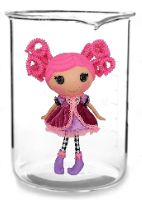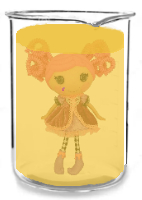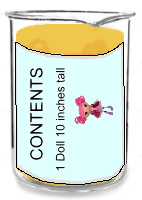 Transparent, translucent, and opaque are terms used to describe how materials interact with light.  Transparent
TransparentMaterials that allow light to pass through without scattering it, allowing you to see clearly through them, are called transparent. Examples include air, water, and clear glass. Here the glass beaker is transparent, allowing you to see the doll within clearly.  Translucent
TranslucentMaterials that allow some light to pass through, but scatter it so that you can't see clearly through them, are called translucent. Examples include frosted glass, tracing paper, waxed paper, coloured glass, and vegetable oil. Here the vegetable oil distorts the image of the doll.  Opaque
OpaqueMaterials that do not allow light to pass through them are called opaque. Light that hits an opaque material is absorbed or reflected. Examples include wood, stone, concrete, thick paper and metal. Here the paper label completely blocks the image of the doll inside the beaker. |